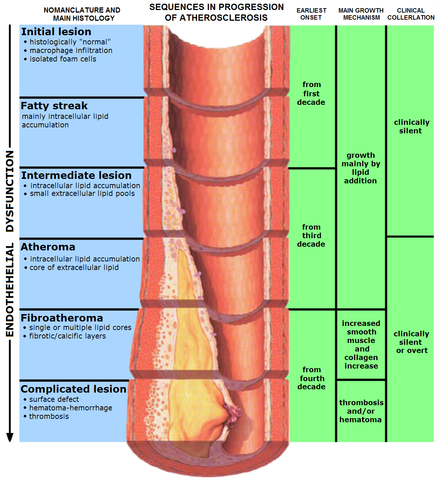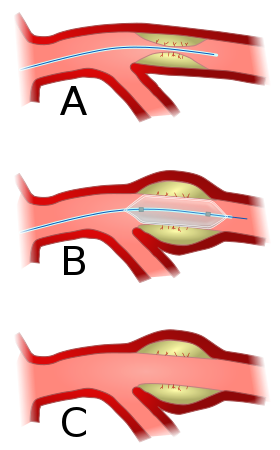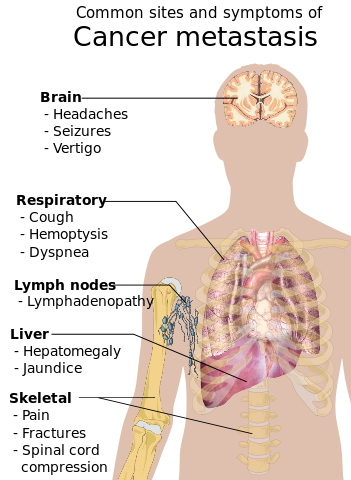Hello, dear readers. This is sequel to my previous post on HEALTH AND DISEASES: Types of Cardiovascular Disease #1, where I discussed extensively on the different types of cardiovascular diseases. I ended the post by highlighting the two things that increase the risk of hypertension. I mentioned high intake of salt as one and the second is part of what I will be discussing today; which is smoking. So, what’s the link between smoking and atherosclerosis?

THE LINK BETWEEN SMOKING AND ATHEROSCLEROSIS
If you smoke, you are much more likely to develop atherosclerosis. However, there is no straightforward explanation of how smoking actually causes formation of atheroma. Several mechanisms could be involved:
- Cigarette smoke contains nicotine. Nicotine is a vasoconstrictor: it narrows the blood vessels and leads to an increase in blood pressure. High blood pressure can damage the artery walls and so increase the likelihood of atheroma formation.
- Smoking increases the level of cholesterol-rich lipoproteins in the blood. This accelerates the formation of the fatty streaks that are the first sign of atherosclerosis.
- Smoking increases the amount of fibrinogen circulating in the blood This increases the chance of a blood clot forming if an atheroma breaks up in the artery.
THE LINK BETWEEN DIET AND ATHEROSCLEROSIS
Although newspapers and magazines can give the impression that all cholesterol is bad, it is an essential component of cell surface membranes. Cholesterol is used by the body to synthesise hormones such as oestrogen and testosterone. It becomes a danger only when it is present in high concentrations in the plasma. Cholesterol is a lipid and, like other lipids, it is insoluble in water. In order to be transported in the blood it is combined with a protein, forming a complex molecule called a lipoprotein. There are different sorts of lipoprotein, which have varying amounts of cholesterol and other lipids.
Low-density lipoprotein (LDL) is commonly called 'bad' cholesterol. This type of lipoprotein contains high amounts of cholesterol and can contribute to the formation of atheromas. High-density lipoprotein (HDL) is commonly called 'good' cholesterol because, not only does it not contribute to atherosclerosis, it actually helps to scavenge some of the cholesterol from LDL particles, making them less dangerous.
It is best to have a total blood cholesterol level of 200 milligrams per cubic centimetre of blood. Of this total, the amount of LDL should be low – between 100 and 130 mg cm-3. HDL should make up the rest. If someone's total blood cholesterol is higher than 200 mg cm-3 or if LDL is over 130 mg cm-3, or if HDL is lower than 35 mg cm -3, they are at increased risk of developing atheromas.
LDL particles that are excess to the requirements of the liver and other organs leave the blood and penetrate the walls of blood vessels, particularly in places where the wall has been damaged. Phagocytes then engulf them but are unable to break down the cholesterol that they contain. This accumulates in the cytoplasm of the phagocytes which then become foam cells. The appearance of foam cell is the first recognizable sign of atherosclerosis.

TREATING CARDIOVASCULAR DISEASE
Although emergency resuscitation is the first treatment needed to save the life of someone who has just suffered a major heart attack or stroke, there are many different treatments for underlying atherosclerosis.
Heart bypass surgery
A coronary artery bypass graft operation, sometimes called CABG or 'cabbage', is carried out to re-route blood around clogged coronary arteries to improve the supply of blood and oxygen to the heart. The surgeon sometimes takes pieces of vein from the leg of the patient, sews one end into the aorta and attaches the other end to a coronary artery below the blocked area. In this way, the blockage is bypassed and normal blood supply is restored. It is also possible to detach one of the arteries that lead into the chest wall and then to graft it into the coronary artery. The number of grafts made is indicated by the way the surgeon describes the operation - a double heart bypass involves two grafts, triple and quadruple bypass operations use three and four grafts.
Angioplasty
Angioplasty is used to treat angina or to reduce the risk of a heart attack. In balloon angioplasty, a thin tube with a deflated balloon at the end is introduced through the skin and fed into the coronary artery that has become narrowed by atherosclerosis. The surgeon checks its progress using a real-time high-speed X-ray image and, once the end of the tube is in the right place, the balloon is inflated gently. This pushes through the obstruction, making the lumen of the artery bigger.
Sometimes in balloon angioplasty, a short length of rigid tubing called a stent is left in the artery. This keeps the vessel open and prevents further narrowing at that point. Although angioplasty is most often done in coronary arteries, it can be carried out in any blood vessel in the body.

Common drug therapies
Hundreds of drugs are used in the treatment of heart and vascular disease.
The table below provides an overview of some of the main classes.
Some of the main classes of drugs used in the treatment of heart and vascular disease
| Drug type | Drug | Used to treat | Effect on the body |
|---|---|---|---|
| coronary vasodilator | isosorbide dinitrate and other nitroglycerins | angina | Relaxes veins in the body. The amount of blood that returns to the heart is reduced and so the heart has to work less hard. |
| beta-blockers | Inderal | angina; to prevent heart attacks in people with coronary artery disease; to reduce death rate in people who have suffered a heart attack | Blocks receptors on the heart that respond to adrenaline and related hormones, preventing the heart from working harder when these hormones are released. |
| diuretics | Bumetanide | high blood pressure; congestive heart failure | Causes kidneys to retain less water, reducing excess fluid in the body. |
| calcium channel blockers | Cardizem | angina; coronary artery disease; high blood pressure | Relaxes the muscular walls of the arteries. In coronary arteries, this enables better blood supply to heart muscle. In arteries in the rest of the body, it reduces blood pressure |
| cholesterol-lowering drugs | fluvastatin | high blood cholesterol and high LDL | Reduces total blood cholesterol, targeting LDL specifically by inhibiting an enzyme that is involved in LDL production. Used in combination with a low-fat, low-cholesterol diet |
| anti-arrhythmics | digoxin | heart rhythm problems; angina; high blood pressure | Different problems have different effects. Digoxin increases the strength of contraction of the heart muscle as well as helping to prevent abnormal heart rhythms |
| anticoagulants | warfarin, aspirin | post-heart attack or stroke treatment to prevent further attacks | Make blood less likely to clot, reducing the danger of thrombosis and thrombophlebitis |

PREVENTING CARDIOVASCULAR DISEASE
Treatment for cardiovascular disease is improving constantly, but that old saying ‘prevention is better than a cure' holds true. Once the arteries have clogged with atheroma, the process is irreversible, and surgery and drug therapy can only treat the symptoms it causes.
Changing our lifestyle to prevent buildup of atheromas in the long-term is the answer, and education programmes and public health advice stress three main points:
- Never smoke. If you do, give up, or at least cut down.
- Eat a balanced diet that contains less than 25 per cent of its calories as fat. Saturated fat should be no more than 10 per cent. Eat at least five portions of fresh fruit and vegetables each day.
- Take regular exercise. Exercise that is aerobic – that leaves you out of breath – should be done at least three times a week for at least 20 minutes.
SEND IN THE CLOT-BUSTERS
When someone has had a heart attack or a stroke and is recovering, part of the treatment is designed to prevent further attacks. Giving up smoking, eating less fat and doing more exercise are priorities, but they take time to have an effect. While they are most at risk, heart attack or stroke victims, particularly those with quite severe underlying circulatory problems, are often prescribed clot-busting drugs such as warfarin or aspirin. These drugs ‘thin' the blood so that it is less likely that a clot will form and break away from the blood vessel wall to cause an arterial blockage in the heart or brain, Several large clinical trials have shown that a small amount of warfarin or half an aspirin tablet taken every day decreases the chance of having a second heart attack or stroke.
CANCER
Cancer has been a major cause of death and disease throughout recorded history, but it is now the second biggest cause of death in the western world. There are two probable reasons for this apparent increase. First, many people are surviving longer, free from other diseases, and so have an increased chance of developing cancer. Second, we are now more likely to be exposed to carcinogens (cancer-causing agents) such as cigarette smoke and sunlight.
WHAT IS CANCER?
Cancer occurs when there is a breakdown in the cellular control mechanism that puts the brakes on cell division. So cells that should be stable begin to divide, forming a tumour. A tumour is a swelling that can occur almost anywhere in the body. It is made up of a mass of abnormal cells that divide continuously.
Some tumours are benign. Although they can grow to the size of a grapefruit. They do not actually destroy the surrounding tissue or spread to other organs. Other tumours are malignant. They destroy the surrounding tissue and their cells often break away and spread through the blood or lymph system into other sites where they form secondary tumours. A malignant tumour is what we usually describe as cancer.
The rate of cell division varies greatly. Some tumours develop quickly, others can take 10 years to reach a noticeable size. Cancer cells usually fail to differentiate: they cannot specialise for the particular function of the tissue they grow in. In a figure showing how cancerous cells spread, it looks different from normal cells. The cancerous cells are smaller, with clear, enlarged nuclei - the classic signs of active cell division.
Steps on how cancers develop
- One cell starts to divide uncontrollably: it becomes cancerous.
- The cancerous cell divides rapidly, forming a mass of cells - the primary tumour – which squashes out the neighbouring normal cells cancerous cells are carried to other parts of the body.
- The process of metastasis. A clump of cells breaks free from the primary tumour and is then carried by the blood or lymphatic system to another part of the body. Fortunately, very few of these clumps of cells, about one in ten thousand, are able to establish themselves and form a secondary tumour, but that is enough. Nearly 60 per cent of people who are diagnosed with cancer are found to have well-established secondary tumours.

WHY IS CANCER SO DANGEROUS?
Tumours interfere with the activity of the cells in the tissues of organs that surround them. Benign tumours can compress tissues, preventing normal blood flow or nerve function. Malignant tumours do even more damage, invading surrounding tissues and killing normal cells in the process. Cancer can also spread to other parts of the body by the process of metastasis.
Many tumours form from epithelial cells and, in order to break away, they must escape from the proteins that bind them to the underlying basement membrane that is characteristic of epithelial tissue. They do this by secreting protein-digesting enzymes. They also produce reduced amounts of the adhesion molecules that usually hold cells together.
I will explain the biological basis of cancer and how to treat the disease in my next post.
Thanks for reading.
REFERENCES
https://www.ncbi.nlm.nih.gov/pubmed/25174928
https://www.verywellmind.com/smoking-and-atherosclerosis-2824903
https://www.nhlbi.nih.gov/health-topics/smoking-and-your-heart
https://www.ncbi.nlm.nih.gov/pmc/articles/PMC2032521/
https://www.nature.com/articles/ejcn2010286
https://www.cuimc.columbia.edu/news/new-link-between-high-fat-diet-and-atherosclerosis-identified
https://www.cdc.gov/cholesterol/ldl_hdl.htm
https://www.medicinenet.com/script/main/art.asp?articlekey=6232
https://www.mayoclinic.org/diseases-conditions/heart-disease/diagnosis-treatment/drc-20353124
https://www.healthline.com/health/heart-bypass-surgery
https://www.mayoclinic.org/tests-procedures/coronary-bypass-surgery/about/pac-20384589
https://en.wikipedia.org/wiki/Angioplasty
https://www.ncbi.nlm.nih.gov/books/NBK355311/
https://www.heart.org/en/healthy-living/healthy-lifestyle/how-to-help-prevent-heart-disease-at-any-age
https://medlineplus.gov/howtopreventheartdisease.html
https://www.webmd.com/stroke/news/20180426/a-better-clot-buster-drug-for-strokes
https://www.webmd.com/heart-disease/guide/medicine-clot-busters
https://www.medicalnewstoday.com/articles/323648
https://www.medicinenet.com/cancer/article.htm
https://en.wikipedia.org/wiki/Cancer
https://www.cancercenter.com/what-is-cancer
https://www.medicalnewstoday.com/articles/323648
https://www.cancer.gov/about-cancer/understanding/what-is-cancer
https://www.medicalnewstoday.com/articles/323648
https://www.ncbi.nlm.nih.gov/books/NBK9963/
https://www.forbes.com/sites/quora/2017/03/07/what-makes-cancers-so-lethal/
Thanks for your contribution to the STEMsocial community. Feel free to join us on discord to get to know the rest of us!
Please consider supporting our funding proposal, approving our witness (@stem.witness) or delegating to the @steemstem account (for some ROI).
Please consider using the STEMsocial app app and including @stemsocial as a beneficiary to get a stronger support.